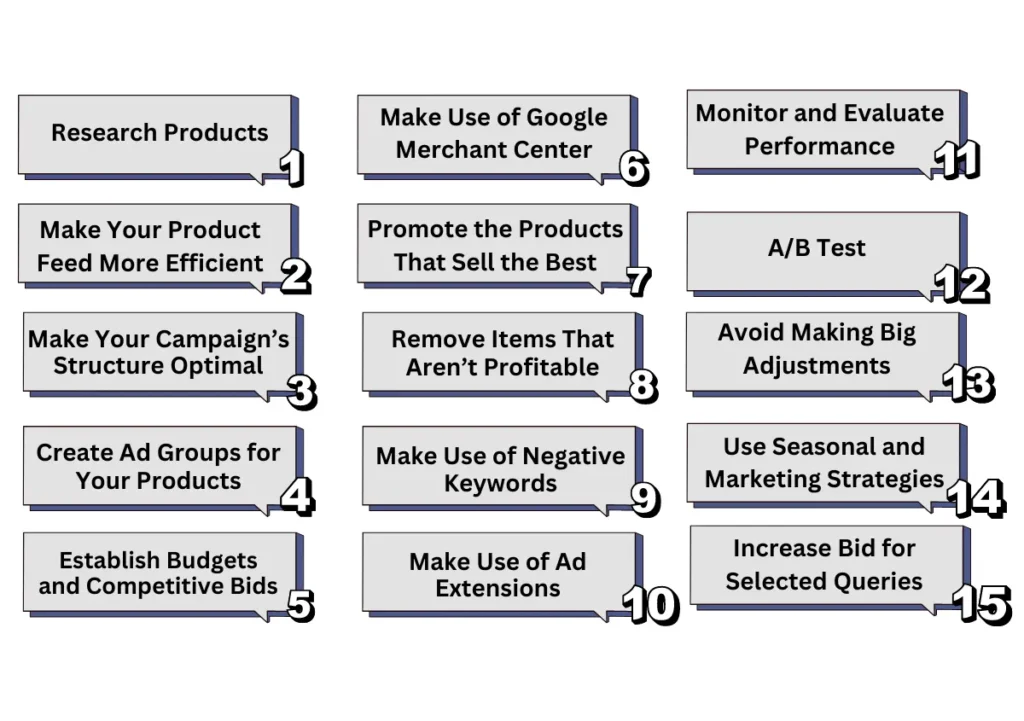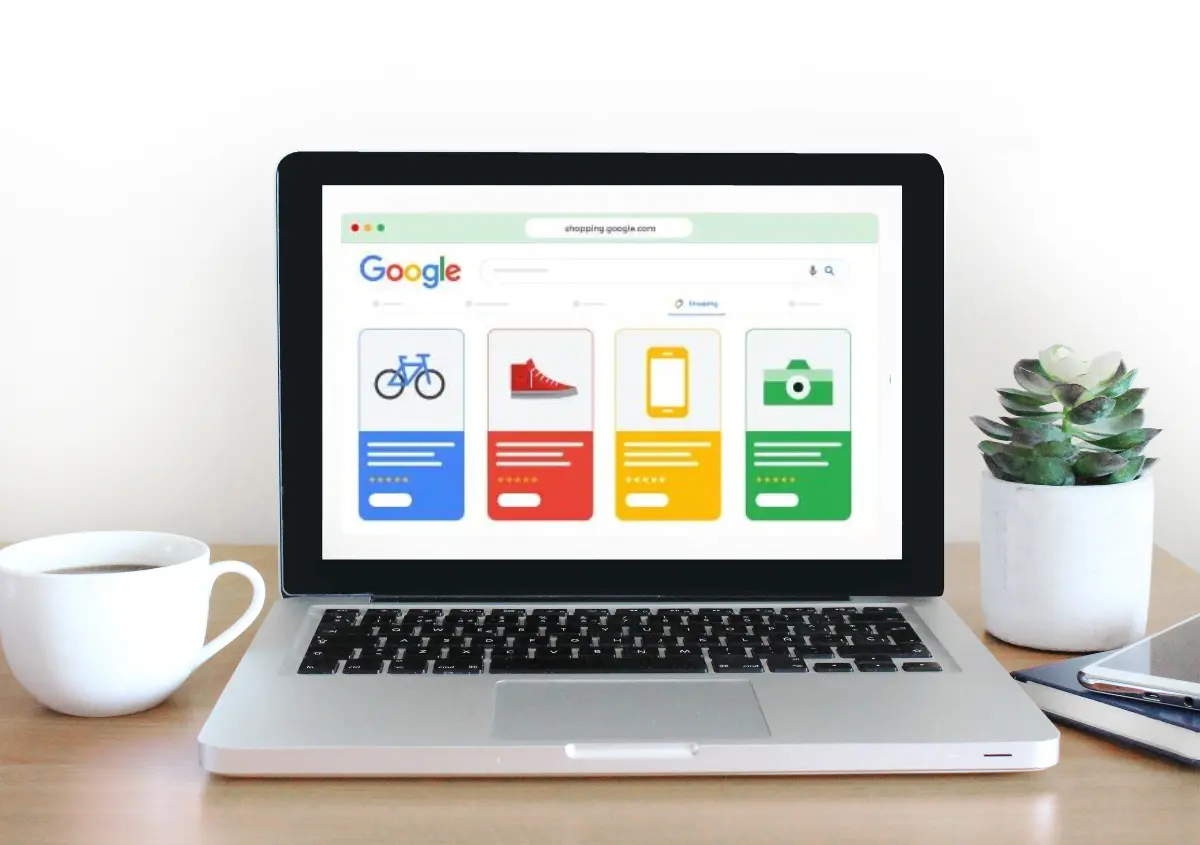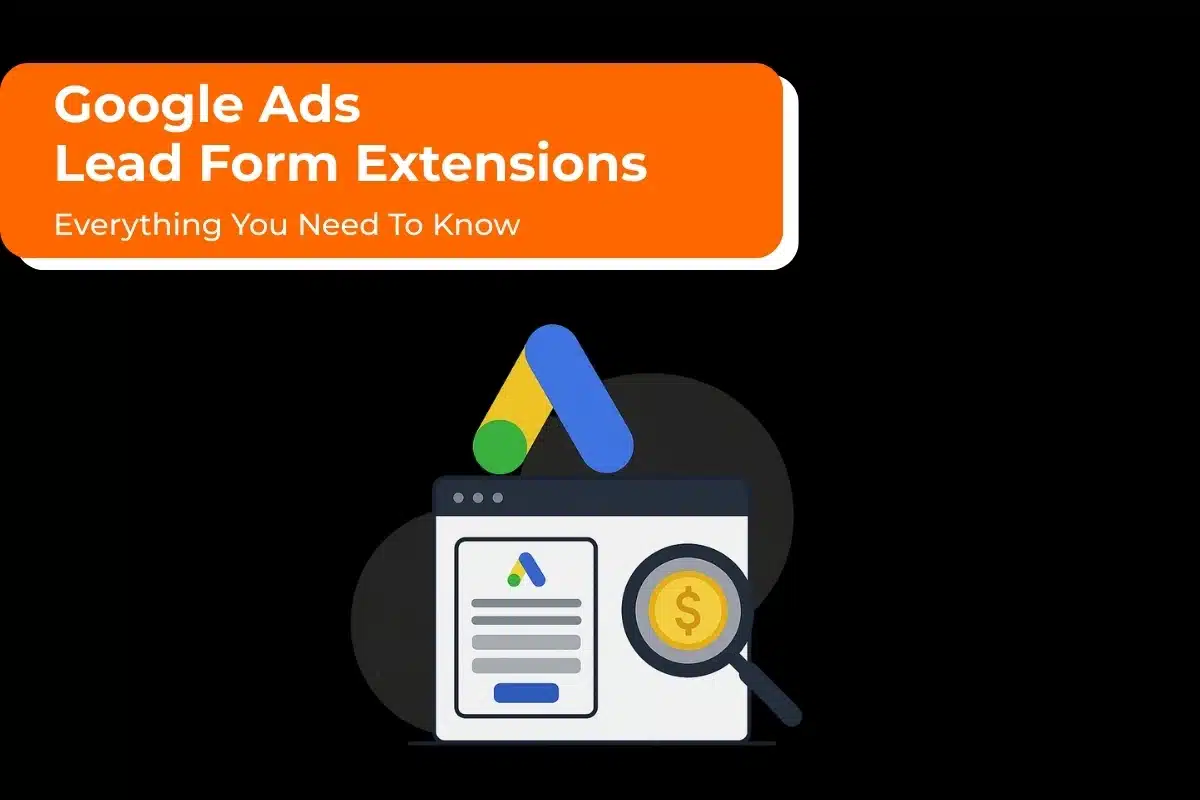The online shopping landscape has changed the dynamics of how people look for products. Within seconds, consumers are presented with many options well beyond comparison. Nowadays, while Big players dominate with significant investments in SEO and PPC advertising, smaller players struggle to get noticed.
However, there is a lifeline for such small enterprises – Google Shopping Ads Campaigns. These account for a major chunk of Retail ad spend campaigns, capturing over 85% of all clicks.
Google Shopping ads optimization is mandatory for businesses to maximize ROI.
What are Google Shopping Ads?
Google Shopping ads are among the most widely used types of ads for online retailers. These shopping ads contain detailed product information, such as pricing, merchant names, and product images. The data feed displays information to consumers who are looking for the products being advertised based on what the business submits.
This data is extracted from the product information’s data attributes and presented. Google Shopping Ads campaigns assist in product promotion by providing consumers with comprehensive product details before they click on the ad. Tracking product performance with retail-focused data solutions helps businesses understand their campaigns and ad spending better.
15 Effective Ways to Optimize Your Google Shopping Campaigns

1. Research Products
The effectiveness of your Google Shopping campaign depends on how well you research your products. You must fully comprehend your target audience’s tastes before you begin building your campaign.
Product research includes investigating market trends, evaluating rivals, and spotting market gaps that your products can close.
To start, research demographic information to learn about your potential clients’ region, age, gender, and hobbies. This data will be the “north star” of your campaign. Next, examine your rivals’ goods and tactics. Analyze their advantages and disadvantages to find the best ways to promote your products.
Next, investigate how customers behave. Discover the issues they are having and the reasons behind their decisions to buy. You may directly address these elements in your product listings by knowing what makes people convert.
Use resources like Google Trends, keyword research tools, and social media data to see what the market demands. With the aid of these insights, you can improve the quality of your product offerings, write intriguing descriptions, and maximize the visibility of your titles.
2. Make Your Product Feed More Efficient
Optimizing your product feed is the initial step towards creating better Shopping ads. This is where Google gathers product information to display your adverts. You must optimize your products for the highest quality and provide as many product qualities as possible to explain your offerings.
Product Details for Google Shopping: Product data are the important product details you wish to market on Google’s e-commerce platform. These details include the product’s name, price, availability, and a link to the product page, which can be accessed in your product feed. Accurate descriptions and top-notch photos are essential since they have a direct impact on how prospective buyers see your products.
Why is Optimizing Product Feeds Important?
Having current, well-structured product information can help you appear higher in search results. Your chances of appearing for the correct clients are higher the more easily Google can “read” the information about your products.
Consequently, one of the most important things to remember when conducting advertisements on Google Shopping is to ensure your product data is accurate and optimized.
Where Do You Even Begin?
If you’re just starting with data feed optimization, you should prioritize a few product attributes. Of course, the most crucial attributes are those that would show up in product ads.
Essential Features of the Product
- Images
- Titles of Products
- Product Cost and Sale Price
- Color of the product
- Product dimensions
- Product details
- Policies for shipping and returns
3. Make Your Campaign’s Structure Optimal.
Optimizing your campaign structure is one of the most important things you can do to position your brand/business for long-term success. But it can be challenging to understand at first.
You aim to gain as much control as possible over your product listing ad. This way, you can place varying bids for various products. Although you may not be able to do it at the start, there are strategies for segmentation and organizing your products so that you can.
Because different products have varying profit margins—some are more popular than others, and some have drastically variable conversion rates, etc., you shouldn’t have one bid for all of your products.
For this reason, you should group your products using Google Ads. You can group them according to category, brand, condition, item ID, product type, and custom labels.
4. Create Ad Groups for Your Products.
You won’t be able to manage the bidding on the ads with a keyword, so you’ll need to find another method. Alternatively, you can arrange your products using ad groups. Your ad groups can be compared to distinct store departments. Ensure that the triggered ads are as relevant as possible.
It’s possible to notice that when you initially launched your campaign, you already had your first ad group.
5. Establish Budgets and Competitive Bids.

Here, we’ll only cover the initial stages of setting up a Google Shopping Campaign bid. Bidding is vast and can be very intimidating.
First, analyze your conversion rates and product margins to develop a bidding strategy that works for you. Make use of smart bidding, which has significantly improved recently.
However, remember that even though smart bidding can be very successful, it still needs to be carefully managed and monitored to ensure that it helps you reach your unique business goals and objectives.
Must Read:- Conversion Value Google Ads
6. Make Use of Google Merchant Center.
The Google Merchant Center is free and can make your Google Shopping campaigns more effective. This platform can also help you maintain the relevance and accuracy of your product data. First, organize your product feed, including all the necessary details, such as prices, availability, titles, and descriptions.
By giving search engines detailed information about your products through structured data markup, you can raise your Google search engine rankings.
Note that Google won’t display your product ads if your data feed doesn’t correspond with the products on your website. Thus, it’s essential to maintain this information, current and consistent with your website.
When it comes to optimizing shopping ads, be proactive rather than defensive.
The Feed Audit tool can be used to:
- Determine which fields and values are missing.
- Discover the items that are not allowed and why.
- Find out how to enhance the quality of the feed.
All of GMC’s parameters are examined in the audit so you can make changes before the issue arises.
7. Promote the Products That Sell the Best.
Choose your best-selling products from your inventory. These are products that have appealed to consumers already. You can leverage their popularity and boost conversion rates by showcasing them prominently in your Google Shopping ads campaigns.
Use attention-grabbing names, striking photos, and enlightening descriptions to draw attention to these products. Consider allocating a large portion of your spending budget to these high-performing products.
The Feed audit tool mentioned earlier can also be used to identify areas where your product title, descriptions, and other pertinent data should be improved.
8. Remove Items That Aren’t Profitable.
You can stop promoting your unprofitable products by removing them from your Google Shopping Ads campaign and marking them as excluded when editing your bids.
Alternatively, you can use a data feed tool to find losers with a similar filter and click to delete them from your feed.
You might also wish to take this action in other instances, such as when you anticipate that a particular product line won’t be received well. You can make a list of them and use a single rule to exclude them–for instance, you wouldn’t want to promote winter products in summer.
9. Make Use of Negative Keywords.
Negative keywords are the unsung heroes of your marketing efforts. Unlike text ads, you cannot specify the keywords to make your product ads visible. Each query is taken from your data feed. Negative keywords, however, allow you to restrict the searches that your ad will appear for. Google is informed by negative keywords about which search queries won’t result in your ads.
Assume you are a seller of Silver earrings. If a prospect is searching for Gold earrings, he/she won’t buy what you are offering. This greatly impacts your ad spend budget if this continues. ‘Gold’ can be added as a negative keyword to prevent your ad from appearing when the user searches for “Gold earrings.”
Negative keywords can be added for the entire campaign or specifically for each ad group (more on that next). To add your values, simply select the ‘Keywords’ tab, scroll down to Negative keywords, and enter them.
10. Make Use of Ad Extensions.
The relevance and visibility of your ads are improved with ad extensions—the likelihood of conversions rising is when people have more reasons to click on your ads, thanks to these add-ons.
A few examples:
- “Price Extensions” display product costs straight within your advertisements.
- “Promotion Extensions” draw attention to exclusive deals and discounts.
- “Location Extensions” to offer details on actual stores
The intention is to provide users with more information in search results. These add-ons build trust, inspire confidence, and encourage users to click through.
11. Monitor and Evaluate Performance.
Review important performance indicators regularly to gain insights into what is and is not working and where changes are required. This is where you must report your findings. It helps you decide how to advance your campaigns through reduced CPCs, improved conversions, and increased revenue.
The following are some crucial KPIs you should monitor:
- ROI (Return on Investment)
- Rate of Click-Through (CTR)
- Click-through Rate (CPC)
- Rate of Conversion
- Keyword Results and Customer Behavior
Use a PPC monitoring tool to know which component in an account led a metric to rise or fall—whether it was a keyword, placement, or the network as a whole.
Must Read:- How to Improve Conversion Rate in Google Ads?
12. A/B Testing
Images
You may think you know your customers rather well, but you can never be sure which image will do poorly and which will capture their attention.
A/B testing images is essential to determine which ones perform best for your Google Shopping Ads campaign. Try a few image alterations and evaluate the outcomes.
You may enhance the effectiveness of your ads by making changes to your visuals using this knowledge. If you are serious about Google Shopping marketing, guesswork is a poor strategy.
Product Titles
With product titles, you should apply a very similar strategy. Few titles may perform better than others.
With certain feed management systems, you can run two distinct titles at once throughout your product line.
All you have to do is draft version A and version B of the particular product title using two distinct title structures.
The performance datasets can then be compared and evaluated, and winners can be selected.
13. Avoid Making Big Adjustments.
Even though it would be tempting to implement many changes at once, this isn’t the best strategy. Google Shopping Ads are delicate. A minor modification to your offer could significantly impact your outcome. Therefore, you shouldn’t make any significant adjustments beyond eliminating your losers.
A thumb rule is to avoid changing your offers by more than 20%.
For product categories that account for no more than 20% of your traffic, take that action. For instance, you should only change your bids for product groups that receive a maximum of 200 visits overall if your campaign receives 1000 clicks in a given time window.
Monitor whether the adjustments you made are helping you. To make sure you’re making the best decision possible, A/B test your ads.
14. Put Seasonal and Marketing Strategies Into Practice.
Special and seasonal deals can increase the effectiveness of your Google Shopping Ads campaign. The best times to buy are during holidays, special occasions, and peak shopping times.
Create compelling promos, including time-limited deals, discounts, and packages, to attract customers. Revise your product descriptions and titles to highlight the unique aspects of these offers.
When you anticipate fluctuations in conversion rates, you can build a seasonality adjustment to assist Google’s Smart Bidding function better.
Taking advantage of seasonal sales and providing attractive incentives instills a sense of urgency that drives conversions.
15. Increase Your Bid for Selected Search Queries.
The fact that you can target keywords in Google Shopping is one of its best-kept secrets!
As a result, you can bid more (and lower) for the search queries that are most important to you. It’s effective and works wonders.
It can be done as follows:
- Determine which search terms are most beneficial to your company. Look through your search terms to locate these.
- Make an identical duplicate of your current shopping campaign.
- Take the list of valuable search terms from one of the campaigns and discard it.
- Raise the maximum CPC in the campaign without the negative keywords; lower the CPCs in the campaign with them.
- Make sure the other campaign is set to “Medium” and change the campaign priority setting of this “valuable” campaign to Low. If the two campaigns have identical products, this instructs Google which campaign to select. (This is when it gets tricky!)
And that’s it. You may need to read the aforementioned points several times to understand them better. However, once you get it, you can access one of the best shopping strategies!
Wrapping it Up
Use these 15 strategies to ensure that your Google shopping campaigns are performing at their peak. You’ll see improved conversion rates, quality leads, and ROI over time.
If you are still confused and need Google ads experts help to optimize your Google Shopping Ads, contact Website Pandas’ team today.






